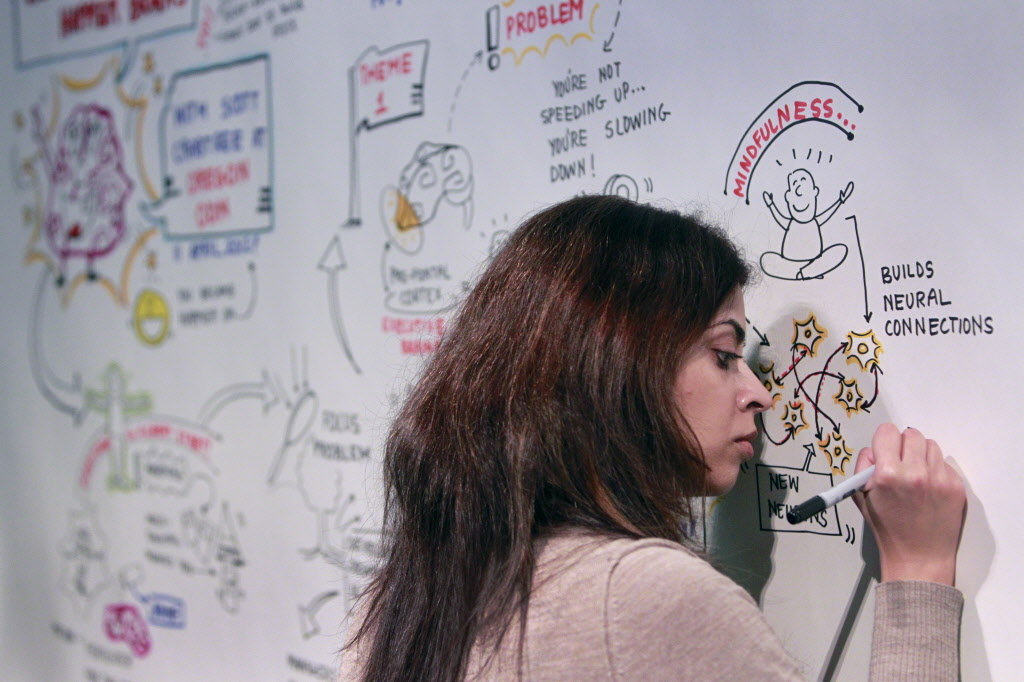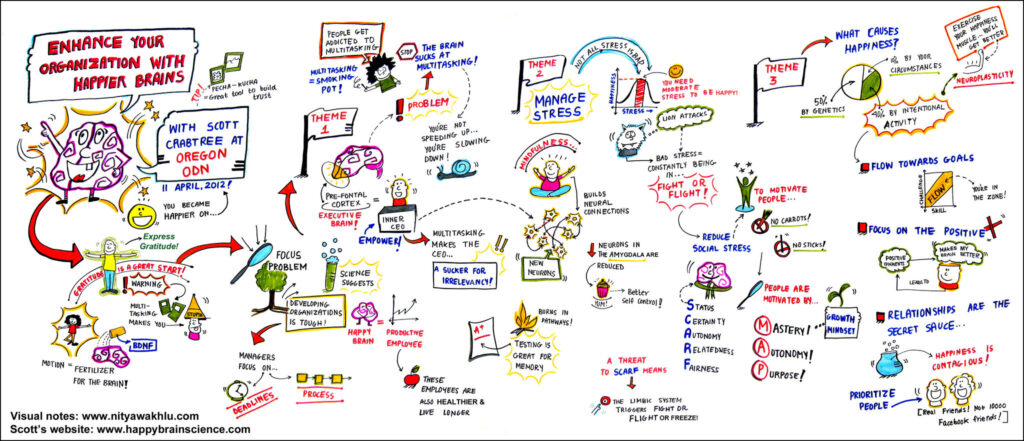
The Power of Pictures
I never would have predicted that my junior high drafting class, a cliché, graphic recording, neuroscience, and presentations would all have something in common.
It was the first day of my junior high drafting class, and my classmate was standing at the front of the room with a podium hiding the object in his hands. “It’s basically a rectangle shape, but several things are sticking out of it in different directions. A longer one comes out the top, a medium thing is sticking out the side, and out the back side is a short one.”
Perhaps you are as frustrated by that description as we were sitting in class. This was precisely the teacher’s point. After 10 minutes of fruitless attempts to describe the object behind the podium, the teacher asked us what this exercise was intended to show. “A picture is worth a thousand words,” a classmate finally said.
As a student of neuroscience and a professional speaker, I know the power of images. Our brains are largely visual processing machines, with over 30 different parts of the brain devoted to processing vision. Yet far too many presenters and teachers stand up and rely on words alone to convey meaning. My very first presentations were no different; my slides included a title, bullets, and phrases, but no images. This forced the brains in the audiences to choose between processing what was written on the slides and what I was saying.
Only when I learned as much as I could about brains and teaching did I realize I was missing one of our best processing channels. Showing primarily pictures makes it easier for my audience’s brains to understand what I’m saying. Brains can easily process language and images at the same time with different parts of the brain.
As scientist John Medina puts it, “We are incredible at remembering pictures. Hear a piece of information, and three days later you’ll remember 10% of it. Add a picture and you’ll remember 65%.”
Recently I had the pleasure of taking images to the next level. Nitya Wahklu did some graphic recording at a workshop I was delivering to the Oregon Organizational Development Network. For those who aren’t familiar with graphic recording, Nitya gives a great 5 minute explanation in this Ignite Portland video.
When a graphic recorder is creating an image as a workshop or meeting happens, everyone feels involved in the process. If someone makes a valuable comment from the audience, it gets captured not just in text notes, but in images as well. The result is something everyone can take home as a reminder of the most important points. See for yourself:

Read more about Nitya and the great work she did during my workshop in this Oregonian article. But don’t limit your learning to just your language channel. Be sure to let the images sink into the amazing visual processing channels in your brain.
Whether drafting, presenting, or graphic recording, a picture is indeed worth a thousand words.